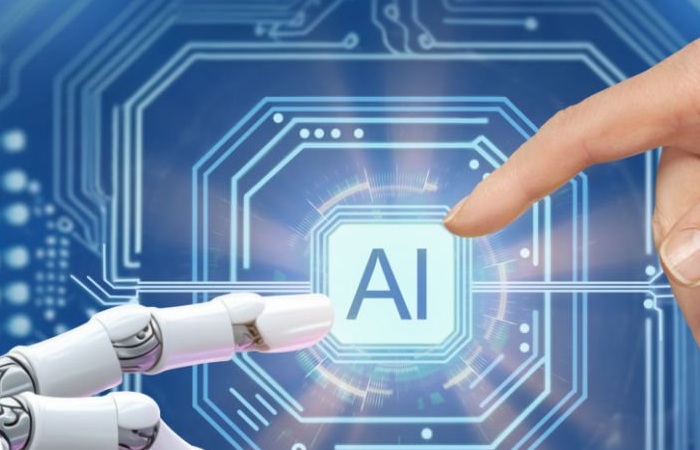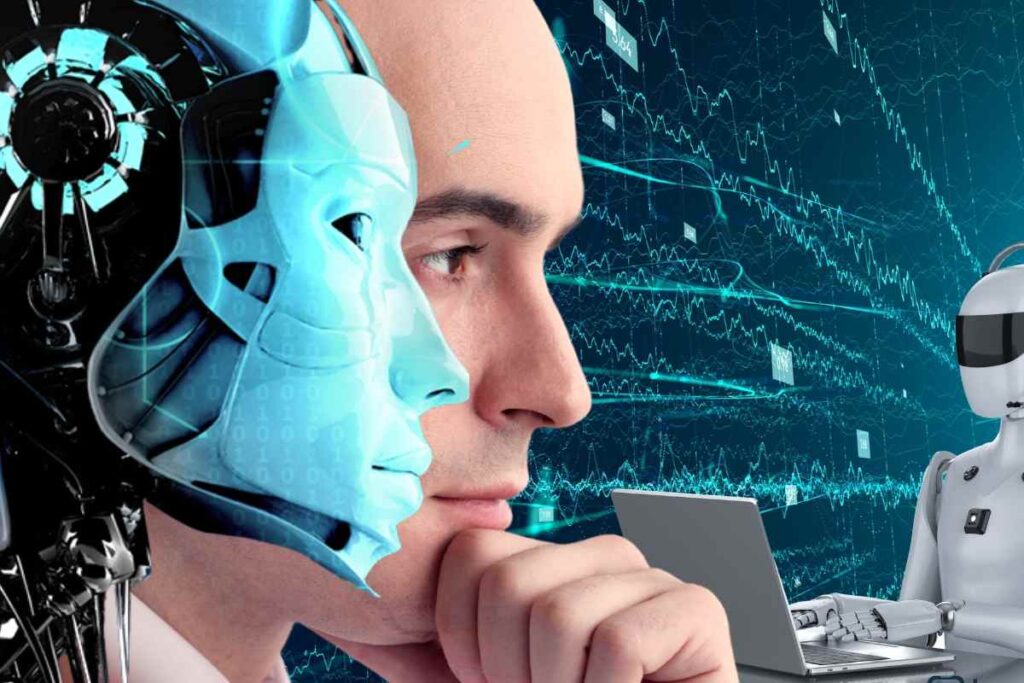Do you remember the Kingdom of Wakanda technological trends, a fictional country from the Marvel Cinematic Universe?
Well, let’s think about its most excellent resource, Vibranium, a metal that helped turn Wakanda into one of the most advanced countries in the world. Heck, Black Panther’s suit and even Captain America’s shield were made entirely of Vibranium!
However, the highlight wasn’t the vast reserves the country possessed but the way the Wakandans used vibranium to improve the state of their technology, which was seamlessly integrated into their infrastructure, healthcare, defense, and governance. This catapulted the country into a futuristic utopia far superior to the rest of the world, but that’s just a fantasy, right?
What comes to mind when we say “new technologies“?
Can you imagine the flying cars and holograms we often see in movies? Well, sorry to disappoint you. We’re not there yet. However, we do have a number technological trends of promising future technologies that will bring greater comfort and convenience to businesses and consumers in the coming years.
Think back to last year, when we explored the rise of neuromorphic computing, the transition to human-centered AI technologies, innovations in the virtual sphere like the metaverse and web 3.0, and clean technologies. Since then, these technological trends have become more viable and practical, and those who knew about them before they became mainstream have been able to use them faster than the competition.
Likewise, in 2025, we’ll see more changes in the emerging technological trends, and if you want to stay ahead of the curve, you should definitely keep an eye on them.
Autonomous vehicles will pave the way for comfort.

Last year, we talked about the growing adoption of human-centric AI technological trends, paving the way for more intelligent automation of human-controlled systems. While autonomous mobility is not entirely rooted in artificial intelligence. It is a new discipline that is helping us automate one of the oldest human-powered machines: cars!
By 2025, we expect to see self-driving cars become mainstream across industries and consumers alike. Autonomous vehicles (AVs) have come a long way since the 1990s, when fully autonomous prototypes were roaming our roads. However, the technology is expected to skyrocket thanks to key advancements from major players, such as the launch of Waymo’s self-driving robotaxi and ongoing updates to Tesla’s Autopilot. While existing self-driving cars are reliable, Companies are getting into the game, with Waymo’s parent company, Alphabet, investing up to $5 billion in the startup, which also unveiled its sixth-generation Waymo Driver self-driving system in 2024.
The reason more companies are introducing autonomous vehicles is the positive response from consumers: by 2034, sales of autonomous passenger vehicles in the United States alone are projected to reach about 230,000 units. Elon Musk, CEO of autonomous mobility giant Tesla, believes that full autonomy will soon be achieved, permitting cars to drive themselves without any human intervention. “We are accelerating the pace of automated and autonomous driving,” said Nikolai Setzer, CEO of Continental. This German auto parts company supplies environmental sensors that feed real-time information to vehicles for automated driving.
TechDogs Conclusions:
- Automotive industry leaders should work with governments and regulators to mature a robust regulatory framework that ensures public trust in autonomous mobility technologies.
- Companies should explore partnerships with autonomous driving service providers to optimize transportation and logistics and work with urban planners and authorities to align the adoption of autonomous vehicles with innovative city initiatives.
- Technology-focused automakers should focus on improving their real-time data collection sensors to optimize and improve the overall efficiency of autonomous vehicles.
Generative AI Will Continue to Evolve

We all knew artificial intelligence had to be on this list, right? Although generative AI seems to have been around for some time, it is still an emerging technological trends. Experts believe that generative AI will evolve to offer new capabilities and features by 2025, increasing people’s productivity in the workplace and even eliminating tedious workflows.
We have already started to see improvements in AI models, and AI leaders such as OpenAI, Anthropic, Meta, and Microsoft are investing heavily in its development. Naturally, in 2025, we will see greater integration of generative AI into our daily lives as it becomes increasingly influential in removing limitations and improving daily activities.
Adobe, a pioneer of this trend, has incorporated generative AI into its creative suite, giving rise to visual design tools that allow users to create visual elements and images with minimal effort. For example, with Generative Fill, powered by Adobe’s Firefly Image 3 model. Designers can make more realistic images using simple text prompts. Another great feature is Generative expansion, which can extend beyond an existing image to expand its aspect ratio and fill the new space with an identical background.
Speaking about the rise of generative AI technological trends, Lareina Lee, a senior partner at McKinsey, said, “The analogy is similar to the transition from mainframes (large machines controlled by highly technical specialists) to personal computers that everyone can use.” Likewise, by 2025, AI companies are expected to announce new advancements in generative AI.
TechDogs Conclusions:
- Companies should integrate Gen AI tools to successfully automate processes such as marketing, content creation, product design, etc., not only to save time and resources but also to help employees become more creative and productive.
- Business leaders should also invest in Gen AI training for workers so that they can successfully use it in their work processes, improving AI interactions and work outcomes.
- Future-oriented decision-makers should use Gen AI to analyze customer and industry data to identify new revenue streams, markets, and opportunities.
Biometrics Will Usher in A New Security Paradigm

With increasing attention to data privacy, identity verification, and encrypted communications, it’s no surprise that biometrics is a rapidly evolving technology that will redefine security in 2025. While you may think of it as a fingerprint scanner or facial recognition feature on your smartphone, biometric technology is quietly advancing and moving forward in the security field. As such, biometrics are expected to change the way businesses approach security, verification, and authentication in 2025 and beyond.
Biometric technology has already evolved from simple fingerprint scanners to complex multimodal systems. This advancement was necessary to meet the growing need for secure yet seamless authentication for both consumers and employees. After all, cybercrime and identity theft are on the rise!
Cybersecurity experts believe that we will soon routinely use a variety of human biological data as a means of identification, including fingerprints, facial recognition, voice recognition, iris scanning, etc. In fact, biometric technology is also expected to extend to behavioral aspects. Our unique online behavior patterns differentiate us.
The need to protect our digital identities is driving the rise of biometric technological trends, which received over $370 million in funding last year, laying the groundwork for future growth in this emerging tech sector. Speaking about the potential growth and adoption of biometrics, Jean-Philippe Niedergang, Group Commercial Director and CEO EMEA of Castles Technology. A leader in the global payments industry, said: “The contactless biometric payment card is currently the only biometric payment method on the market, but its evolution into other formats, such as arm vein patterns or facial recognition, is more expected to be the next step. We can’t wait to tell the payment scanner: “Talk to my hand!”
TechDogs Conclusions:
- Companies should implement multimodal authentication models that integrate biometric security with existing cybersecurity systems to improve identity and access management.
- Customer service solution providers should integrate AI-powered biometric solutions to personalize customer experiences while ensuring secure logins.
- Companies operating in highly secure environments should explore behavioral biometrics that provide seamless, continuous verification without disrupting the user experience.
Green Computing Will Be Everywhere

While most of us are familiar with the Internet of Things, a related technological trends has emerged in its shadow. You see, ambient computing is nothing more than a network of connected IoT devices with intelligent AI-powered software running in the background to manage the operation of the network. This means that the devices require little human intervention to operate, resulting in a wholly autonomous and seamless experience.
Thanks to growths in artificial intelligence and machine education, ambient computing systems can interpret data collected from physical devices and sensors to provide a suite of automated, interconnected devices that can make independent decisions.
Speaking about the potential impact of front-end computing, Dave Limp, head of vertical devices and services at Amazon, said, “Front-end computing is another paradigm for interacting with technology, but it’s different in many ways. It’s embodied in the fact that when you’re around them, you don’t need to study them. There should be no leadership; there should be no training.
TechDogs Conclusions:
- Companies looking to create seamless, personalized user experiences must deploy front-end computing in ways that automate how employees interact with devices every day.
- Companies developing front-end computing services must develop and integrate more innovative AI algorithms to improve the performance, reliability, and efficiency of their deployments.
- Developers must also continually experiment with new prototypes of front-end technologies to anticipate user needs, positioning them for intelligent cities and the workplace of the future.
Cities Will Become Smart Cities

Imagine having the best technology not only inside your home but also outside. This is the promise of smart cities, a new technological niche that has gone unnoticed for some time since its inception. However, with a renewed focus on improving city infrastructure and facilities, smart city technology is making a comeback in 2025, promising us a truly Wakandan future. With different discrete technologies finding interoperability and cross-integration, smart city technologies will help create more brilliant, more accessible, and equitable living spaces.
In recent years, intelligent city technology concepts have moved from highly specialized and isolated deployments to a more comprehensive and integrated approach that seeks to integrate a wide range of public services, such as citizen security, healthcare, transportation, energy, and governance. While the state of the technology is not yet close to that of Wakanda. We are seeing increasingly successful deployments in major cities, making smart cities a new technological force worth paying attention to.
For example, Singapore’s Smart Nation initiative has set a global standard for urban transformation. Using IoT sensors and real-time data analytics, city officials can monitor traffic patterns track energy consumption, and public safety failures. The intelligent city program has reduced traffic congestion. Optimized energy consumption, reduced pollution, and increased the efficiency of public services. This is why Singapore can call itself “Asia’s smartest city.”
While full implementation of the technology will require time, energy, and collaboration, a research paper published by Hoang Nguyen, Dina Navara, and Rasha Kashef in the Journal of Information and Intelligence highlights. As technology advances, smart cities will become a significant technological project that will improve the standard of living across the planet.
TechDogs Conclusions:
- Savvy city planners should deploy AI-powered IoT sensors for real-time analytics, helping them effectively monitor and manage critical city services.
- Government decision-makers should encourage public-private partnerships in innovative city initiatives to ensure the scalability and sustainability of technology adoption.
- Companies should anticipate potential challenges when implementing intelligent cities to develop and deliver more robust integrated solutions.
To Sum Up
That’s it, guys!
As the technological landscape is constantly changing, these new technological trends should be on everyone’s list of potential changes. Autonomous mobility and biometrics are firmly established in the mainstream but will open up much greater potential in the near future. Emerging technologies such as ambient computing and smart cities will see new integrations in 2025.
Driven by the need to create more innovative living and working environments. Generative AI will also continue to improve in 2025 and beyond, introducing new features that could potentially eliminate specific processes in the workplace.
While we may not have Vibranium, you should prepare for a technology-driven future with these new technologies!
Frequently Asked Questions
What are the most promising new technologies in 2025?
These technologies will drive progress in sectors such as transportation. AI-driven automation, security, and urban infrastructure, helping businesses become more efficient and creating new opportunities.
How will autonomous vehicles change industries in 2025?
Autonomous vehicles are set to revolutionize industries such as logistics, public transportation. Personal mobility by introducing fully automated systems with little or no human intervention.
How will biometrics improve security by 2025?
Biometrics will usher in a new era of security, going beyond essential facial and fingerprint recognition to include multimodal and behavioral biometric systems. By 2025, biometric technologies will enable more secure and seamless authentication processes. Providing excellent protection against cybercrime and identity theft.

